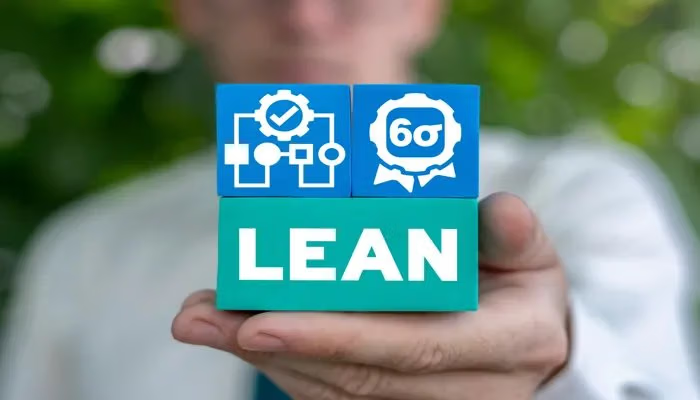Summary: Manufacturers continually refine their production processes in a fiercely competitive business environment to maintain a leading edge. One particularly effective approach gaining widespread adoption is Kaizen Lean, a methodology rooted in continuous improvement and waste reduction principles. By embracing Kaizen Lean practices, businesses can streamline operations, boost productivity, and achieve operational excellence.
What is Kaizen? The Philosophy of Continuous Improvement
Kaizen, from the Japanese word for “continuous improvement,” is central to lean manufacturing. The Kaizen meaning refers to making small, incremental changes to enhance processes and eliminate waste. This continuous improvement mindset infuses every aspect of Kaizen Lean, enabling organizations to constantly seek ways to optimize operations. Using Lean tools like value stream mapping and root cause analysis, inefficiencies are systematically identified and addressed. Across industries – whether manufacturing, healthcare, or services – Kaizen Lean enhances customer satisfaction, reduces errors, and improves overall quality. By nurturing a culture of continuous improvement, companies can harness employee insights, driving sustainable growth and operational excellence.
Introduction to Kaizen
Kaizen empowers employees at every level to identify areas for improvement and make small, gradual changes. This approach fosters a culture of continuous improvement where every member of the organization, from the shop floor to the executive suite, actively contributes to enhancing efficiency, quality, and customer value.
The PDCA Cycle
The Plan-Do-Check-Act (PDCA) cycle is a key framework within Kaizen, providing a structured approach to problem-solving and continuous improvement. The cycle involves planning, acting on improvement opportunities, checking the results, and adjusting accordingly. This loop ensures that organizations continually refine their processes.
Understanding Lean Manufacturing
Lean manufacturing, often associated with the Toyota Production System (TPS), focuses on eliminating waste while maximizing customer value. It streamlines production by targeting inefficiencies like overproduction, excess inventory, and unnecessary transportation.
The Toyota Production System
The Toyota Production System (TPS) is a prime example of Lean manufacturing in action. It encompasses a set of principles and practices that optimize efficiency, quality, and flexibility. TPS emphasizes the importance of standardized work, continuous flow, pull systems, and just-in-time production. By following these principles, Toyota significantly improved productivity, quality, and customer satisfaction.
5S Methodology
5S (Sort, Set in Order, Shine, Standardize, Sustain) provides a systematic approach to workplace organization, a cornerstone of Lean. By implementing 5S, businesses create an orderly and visually controlled environment, driving productivity and waste reduction.
Want to optimize your operations?
Discover how Manufacturing Operations Management software can supercharge your production and drive success.
The Synergy between Kaizen and Lean
Kaizen and Lean work together to create a robust continuous improvement framework. Lean’s focus on eliminating waste is supported by Kaizen’s emphasis on the mindset of improvement. Together, they empower employees to contribute to operational success.
Creating a Culture of Continuous Improvement
The Kaizen and Lean approach nurtures a culture where employees actively identify and address inefficiencies. This collaborative and innovative environment enables organizations to tap into their workforce’s knowledge, resulting in ongoing, incremental improvements.
Gemba: The Place for Improvement
In Kaizen, “Gemba” refers to the actual location where work is performed. Managers and employees visit the Gemba to observe processes, identify bottlenecks, and gain firsthand insights into the work environment. This hands-on approach allows for more targeted and effective improvements.
Implementing Kaizen Lean in Manufacturing
Identifying Areas for Improvement
The Kaizen Lean journey begins with identifying areas for improvement. By analyzing processes, gathering data, and engaging employees, organizations can uncover inefficiencies and opportunities for optimization.
Value Stream Mapping
VSM provides a visual tool to analyze and improve the flow of materials and information. By mapping current processes and identifying areas of waste, organizations can streamline workflows, reduce lead times, and improve efficiency.
Root Cause Analysis
Root cause analysis digs deep into problems to address underlying issues rather than symptoms. Using tools like the “5 Whys,” organizations can implement targeted solutions to eliminate root causes of inefficiencies.
Kaizen Events: Driving Rapid Improvements
What is a Kaizen Event?
A Kaizen event, also known as a “Kaizen blitz” or a “rapid improvement event”, is a focused and time-limited effort to significantly improve a specific area or process. It involves bringing together a cross-functional team to analyze the current state, identify improvement opportunities, and implement changes quickly. Kaizen events are highly structured and follow a systematic approach to driving rapid improvements.
Key Principles of a Kaizen Event
Kaizen events follow several key principles to ensure successful outcomes. First, they require strong leadership and support from management to set the direction and provide necessary resources. Second, they emphasize employee involvement and empowerment, as the frontline workers possess valuable insights and ideas for improvement. Third, Kaizen events rely on data-driven decision-making, where decisions are based on facts rather than opinions. Finally, these events encourage experimentation and learning, allowing teams to test new ideas and learn from both successes and failures.
Examples of Successful Kaizen Events
Kaizen events have been successfully implemented across industries, leading to significant improvements in various processes. For example, a Kaizen event could focus on reducing setup times, improving machine efficiency, or optimizing material flow in a manufacturing setting. In a healthcare setting, Kaizen events could target reducing patient wait times, improving the accuracy of medication administration, or streamlining administrative processes. The versatility of Kaizen events makes them applicable to a wide range of industries and sectors.
Benefits of Kaizen Lean in Manufacturing
Kaizen Lean integrates structured improvements into daily operations, fostering a culture of continuous enhancement.
1. Increased Efficiency and Productivity
Kaizen Lean boosts efficiency by eliminating waste and streamlining processes. This application of lean management methods leads to reduced cycle times, increased throughput, and improved operational performance, enhancing overall productivity.
2. Waste Elimination
Focusing on the eight wastes of Lean – like overproduction and defects – Kaizen Lean systematically reduces waste. This frees up resources, improves flow, and creates a more agile manufacturing environment.
3. Improved Quality and Customer Satisfaction
Continuous improvement efforts enhance quality, leading to fewer defects, higher customer satisfaction, and improved product reliability. Satisfied customers become loyal advocates, driving business success.
Overcoming Challenges in Implementing Kaizen Lean
Implementing Kaizen Lean comes with practical challenges that require a strategic approach.
1. Employee Involvement and Empowerment
One challenge is ensuring employee involvement. Organizations must create an environment that encourages employees to contribute ideas, address problems, and participate in the improvement process.
2. Resistance to Change
Employees may resist new practices, fearing job loss or disruption. Effective change management, clear communication, and support can help ease this transition and demonstrate the benefits of Kaizen Lean.
3. Sustaining a Culture of Continuous Improvement
Sustaining continuous improvement requires long-term commitment. Regular feedback, employee development, and integrating Kaizen Lean into performance evaluations are key to maintaining momentum.
Conclusion
Kaizen Lean provides a powerful methodology for continuous improvement in manufacturing. By fostering a culture of collaboration and employee involvement, organizations can optimize processes, increase productivity, and achieve operational excellence. Through tools like value stream mapping, root cause analysis, and Kaizen events, businesses can systematically identify areas for improvement and strive for ongoing success.
FAQ | Kaizen Lean
How long does it take to see results with Kaizen Lean?
The timeline for seeing results with it can vary depending on the organization, the scope of improvement initiatives, and the level of implementation. Some organizations may see initial results within a few weeks or months, while larger-scale transformations may take several years.
What role do employees play in Kaizen Lean?
Employees are central to Kaizen Lean, actively participating in identifying problems, suggesting improvements, and implementing changes.
Can Kaizen Lean be applied to service industries?
Yes, you can apply Kaizen Lean principles to service industries. These concepts of waste elimination, continuous improvement, and employee involvement are relevant in any sector where you can optimize processes to enhance efficiency and customer value.
What are the key elements of a successful Kaizen event?
Successful Kaizen events involve strong leadership support, employee involvement and empowerment, data-driven decision-making, and a focus on experimentation and learning. They also require a structured approach, clear goals, and a defined timeline for implementation.
How can Kaizen Lean contribute to cost reduction?
It reduces costs by eliminating waste, optimizing processes, and improving efficiency by reducing activities that do not add value and streamlining workflows. Organizations can minimize costs associated with overproduction, excess inventory, transportation, defects, and other forms of waste.
How can small businesses implement Kaizen Lean?
Small businesses can start by focusing on one area, using simple tools like 5S Lean, and gradually expanding their efforts as they gain experience and resources.
Can Kaizen Lean be applied outside of manufacturing?
Yes, Kaizen Lean principles can be applied in various sectors, including healthcare, services, education, and government, to improve efficiency and quality.
How can organizations sustain Kaizen Lean over the long term?
Sustaining it requires continuous training, leadership support, regular review of processes, and integrating Kaizen Lean into the organization’s culture.
Image: Adobe Stock – Copyright: © wladimir1804 – stock.adobe.com





